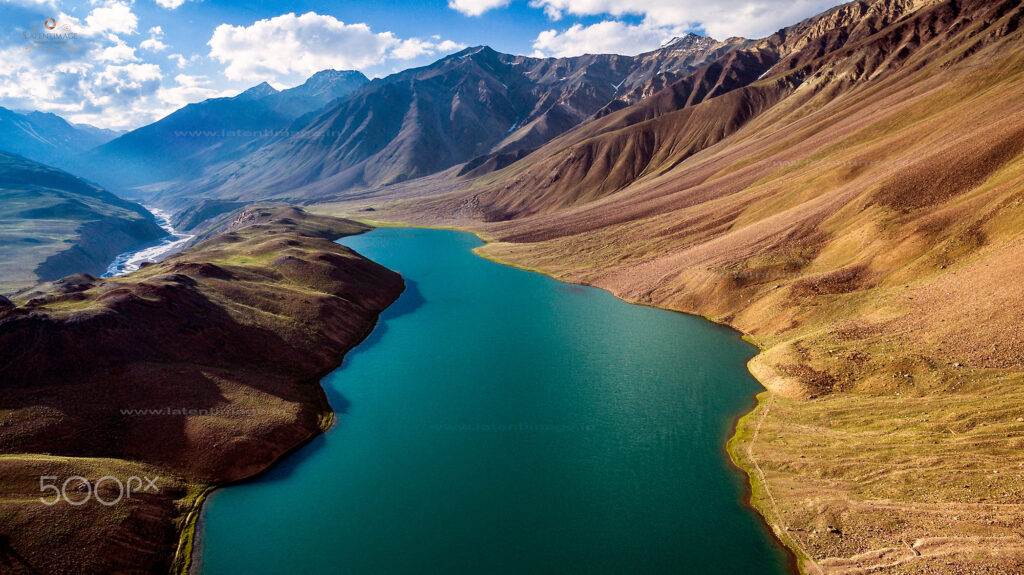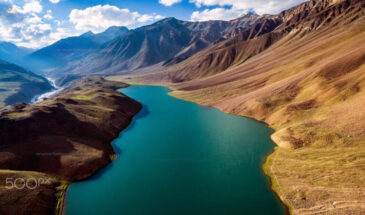- Get Quote
- Itinerary
- Trip Cost
- Inclusion/Exclusion
- Gallery
- FAQ
Day 1: Arrival in Chandigarh and Transfer to Shimla
Reach Chandigarh and meet SetMyTrip's representative who will be leading the entire trip and will draw out a day-wise final plan.Start off your journey by taking the Himalayan Expressway towards Shimla. On reaching Shimla, check in to the hotel and take a rest for a while. In the evening you are free to explore the local markets shopping for souvenirs. Overnight stay at your hotel in Shimla.Day 02: Shimla to Sangla via Sarahan
Post breakfast; proceed for Kinnaur Sangla via Sarahan which is also known as the gateway to Kinnaur valley.You will be travelling through the rich forests of Deodar, breathtaking views of the valley, snow-covered mountain peaks and fast-flowing rivers.Travel along the Sutlej river till Karcham from where you will take a right turn towards Sangla following the Baspa river.Visit the Hattu peak (3,400 metres/ 11,154 feet) and submerged in the scenic beauty of Himalayas. Next on your trip map is the traditional wooden carved temple of Goddess Kali, Hawa Mahal, Cricket Ground, and Oldest Mahal of King of Himachal. After the temple tour, drive to Sangla valley. Overnight stay in hotel in Sangla valley.Day 03: Sangla – Chitkul – Kalpa (90 Km)
On the third day of this Kinnaur & Spiti Valley Tour, we will go towards Kalpa via Chitkul. Chitkul can be described as one of the most scenic settlements in the valley and the last inhabited village before the India-China border. This short drive from Sangla to Chitkul will be one of the most scenic drives you’ll take with plenty of opportunities to take stunning photographs. Walk around the Bapsa river and pay tribute to the Mathi Goddess at the temple in the village. After spending time in Chitkul, we turn around and head to Kalpa. Legend has it that Kalpa was the winter home of Lord Shiva. If it’s true, he couldn’t have found a more remarkable abode for himself, with enthrallingly majestic views of the Kinnaur-Kailash and Jorkandan peaks looming right above the village. Overnight at a hotel in Kalpa.Day 04: Kalpa – Nako – Tabo (145 km / 6 hrs)
After early morning breakfast, you will be leaving for Tabo passing through the beautiful Spiti Valley. Drive along the Indo-Tiber Highway and pass through Khab Bridge that marks the confluence of Spiti and the Satluj River.We will visit Nako Lake and Nako Village which is the last village of Kinnaur Valley. Later we continue our drive to Tabo.En route visit the Gue village which is also the last Indian village on Indo-Tibetan boarder. Here we will visit the naturally preserved mummy of a Buddhist monk which is about 600 years old, which was discovered here while building the road.As you start to enter the Spiti Valley you will watch the mountains change their colours from the lush greens of the Kinnaur valley to the many hues of brown.Reach Tabo and check in to your hotel. Today we will be entering the beautiful Spiti valley which is also known as the cold desert of the Himalayas (this area is cut from rest of the world due to heavy snow in the winters). Overnight at a hotel in Tabo.Day 05: Tabo – Kaza with Dhankar and Lalung Visit (70 km)
Today you will be visiting Tabo Monastery. The shrine was founded in 996 CE and is part of the Spiti Valley above Tabo village. It is popularly known as the 'Ajanta of the Himalayas' because of the beautiful frescoes and stucco paintings. Tabo is believed to be oldest continuously operational Buddhist enclave settled in India and the Himalayas. An interesting fact about the iconography during this period applauded the bond between the diverse cultures of India and Tibet. Guests can also visit Tabo village, where they can spend some time with the locals and witness the stately houses and the cultivated fields. Followed by being a part of a theatrical performance. After the tour, begin a road trip to Kaza. Stopover at Dhankar Monastery sitting high in the Himalayas at an elevation 3890 m. The shrine is blessed with murals which depict Buddhist legends and related local stories. As soon as you reach Kaza, complete the check-in formalities and get proper rest for the night.Day 06: Kaza – Pin Valley – Kungri – Mudh – Kaza
On the fifth day of this Spiti Valley tour, we drive towards the beautiful Pin Valley. Imagine a national park with an abundance of animals and birds, with some rare plant varieties, a river that gushes when it isn’t frozen and trekking opportunities for the adventure-seekers. The Pin Valley promises all this and more. We first visit the Kungri Monastery and then the beautiful hamlet of Mudh – the last motorable village of the Pin Valley. Declared a national park in 1987, Pin Valley has altitudes ranging from 11,000 to 20,000 feet and is home to at least 12 endangered snow leopards. In addition, other animals indigenous to the region and park are the Siberian ibex, bharal, weasel, red fox and marten. Birds such as the pika, griffon, golden eagle, bearded vulture, chukor and raven paint the skies a pretty picture. By evening, drive to Kaza, the commercial capital of the Spiti valley and spend the night in a hotel.Day 07: Kaza – Langza – Hikkim – Komik – Ki Monastery – Kibber – Gette – Kaza
On the seventh day of this Spiti Valley tour, we drive to some of the highest inhabited regions of the world. The highest village in Asia, Komik, which literally translates to ‘eye of a snow cock’, is situated at a height of 4513 meters. This farming village has a population of 84 people, living in utter isolation, cut-off from the rest of the world for most parts of the year. This little hamlet ensures to bring you thousands of miles away from your familiar settings to a place of soft brown pastures and snow-white mountain peaks. Some of the common animals of the region are the Tibetan wolf, blue sheep, red fox, hare, snow cock, Himalayan griffin, rock pigeon etc. Later, we drive to Hikkim where we visit the world’s highest post office in the world. If possible, you might even meet the post-master and hear his stories. After sending out a postcard, we drive to Langza. Langza village is situated at an altitude of 4400 meters and belongs to the Sakyapa sect of Tibetan Buddhism. Langza houses a population of 137 in 33 households. Once you are here, you can walk around the village and visit the ancient Lang (Temple) which is estimated to be around 1000 years old. At Langza, walk back to the prehistoric era when Spiti was submerged by the Tethys Sea, as you explore a land very rich with fossils of Marine animals and plants which were here millions of years ago. We drive back down to Kaza for lunch. After that, we visit the world famous Ki Monastery. The car will first stop at the base of the monastery hill for the ultimate photo opportunity of this remarkable structure. With over 1000 years’ worth stories to tell, the Ki Monastery situated at a height of 13,668 feet was founded by a disciple of the famous Atisha, in the 11th century CE. Belonging to the Yellow Hat or Gelugpa sect of Tibetan Buddhism, this monastery is famous as a prominent center of learning as well as a refuge for Tibetans. Being remotely located atop a hill overlooking endless plains, the Ki Monastery is an obvious choice for those seeking peace and calm. Then we will move farther up the valley to the picturesque village of Kibber. Located at a height of 4205 meters and 18 km from Kaza, this formerly highest permanently inhabited village in this region, is also a popular base camp to embark on adventure and treks to adjoining mountains of high altitude. The expanses of beautiful landscapes and immeasurable beauty of the snow-tipped mountains make the place a haven for nature-lovers and photographers alike. From Kibber you can trek to Chicham Village, located across a sharp and precipitous canyon traversible only by a suspended wire cable basket system known as a Jula. We drive higher up to the secluded village of Gette where we absorb stunning aerial views of Kaza and tie a prayer flag.Day 8: Kaza – Losar – Kunzum La – Chandratal Lake
On the eighth day of this Spiti Valley tour, we drive to one of the most photogenic places in Spiti Valley – the Chandratal Lake. Before that, we pass through the high altitude pass of Kunzum La. Stop by at the stupa and pay tribute to the local goddess, “Kuzum Mata” as she's known. At 15,000 feet above sea-level, the Kuzum Pass connects Kullu and Lahaul to the Spiti Valley. From there, we head to Chandratal Lake – A visual marvel, this stunning blue-coloured lake is set at an altitude of 4,300 meters above sea level in the heart of high Himalayas and is a must see on a full moon night. It derives its name, “Chandra” (Moon) and “Taal” (Lake) from the crescent shape of the lake. Watch the lake change colours from crystal clear shades of blue to emerald greens by dusk. Otherwise barren and bereft of any human settlement, the blue lake bordered by carpeted green meadows couple with the pristine white of the Chandra Bhaga mountain range makes this an ideal camping ground. Live your dream of camping comfortably in the Himalayas as you spend your evening gazing at the Milky Way and the millions of stars on a clear night. Our camps at Chandratal Lake are equipped with camping equipment including tents, high altitude sleeping bags / blankets and a comfortable mattress. Overnight at a camp 2 km away from Chandratal Lake.Day 9: Chandratal Lake – Chattru – Rohtang Pass – Manali
On the ninth day of this Spiti Valley tour, drive from Chandratal Lake towards Manali. We take a quick stop at Batal for a cup of tea at a small tea shop run by a beautiful old couple. From there, we continue driving on the Kaza – Manali highway and stop at Chatru for lunch. Drive through the famous Rohtang Pass and return to Manali to end your breath-taking Spiti Valley sojourn. Here, we bid goodbye to your driver who’d have been your friend and guide for the last nine days. Since there is no sightseeing included in your schedule in Manali, you are free to explore Manali on your own. Overnight at a hotel in Manali.Day 10: Manali – Delhi/Chandigarh
On the final day of our Spiti Valley Tour, wake up with some brilliant views of the Himalayas from your hotel in Manali.Visit the famous Hadimba Devi Temple at Dhungri, Vashisht hot water spring at Vashisht village and Manu Temple in Old Manali Board on overnight bus to New Delhi / we can help you arrange a private taxi from Manali to Chandigarh / New Delhi as an additional service. Just as your body needed time to acclimatize to the mountains in Shimla, this drive is perfect for your mind to acclimatize back into modern-day existence. Bid adieu to the picturesque valleys, blue skies, and winding rivers as you begin descending from the mountains into the plains.Package Cost
| 10 Days Kinnaur Spiti Tour Cost | ||||
| Night Stay | 9 | |||
| Cost/Head[INR] | Budget | Standard | Deluxe | Super Deluxe |
| 02 pax | 23200 | 26800 | 30400 | 38500 |
| 04 pax | 20200 | 23800 | 27400 | 35500 |
| 06 Pax | 17700 | 21300 | 24900 | 33000 |
| Child with Bed | 10620 | 12780 | 14940 | 19800 |
| Child[5-11] without Bed | 8850 | 10650 | 12450 | 16500 |
Package Includes :
- 1 Night Accommodation in Shimla
- 1 Night Accommodation in Sangla
- 1 Night Accommodation in Kalpa
- 1 Night Accommodation in Tabo
- 1 Night Accommodation in Camp at Chandratal Lake
- 1 Nights Accommodation in Manali
- 3 Nights Accommodation in Kaza
- Daily Breakfast and Dinner
- Transfer & Sightseeing as per the itinerary by Private Vehicle
- All Toll Tax, Parking Fees & Driver Allowances
- All Applicable Hotel Taxes(GST extra)
- 24 Hrs On-Tour Ground & Virtual Assistance
- English/Hindi/Bengali Speaking Guide
- Manali to Delhi/Chandigar Transfer by Volvo Bus
- First Aid kit and Oxygen cylinder
- Inner Line permit / Manali Green Tribunal Permit
Package Excludes :
- Whatever Not Mentioned In The Above Inclusions,
- Tips, Porter-Age, Mineral Water, Room Heater,
- Entry Fees at Sightseeing Points
- Any Personal Expenses Incurred During Any Unfavorable Condition
- Service Tax-5%
No Details Found


